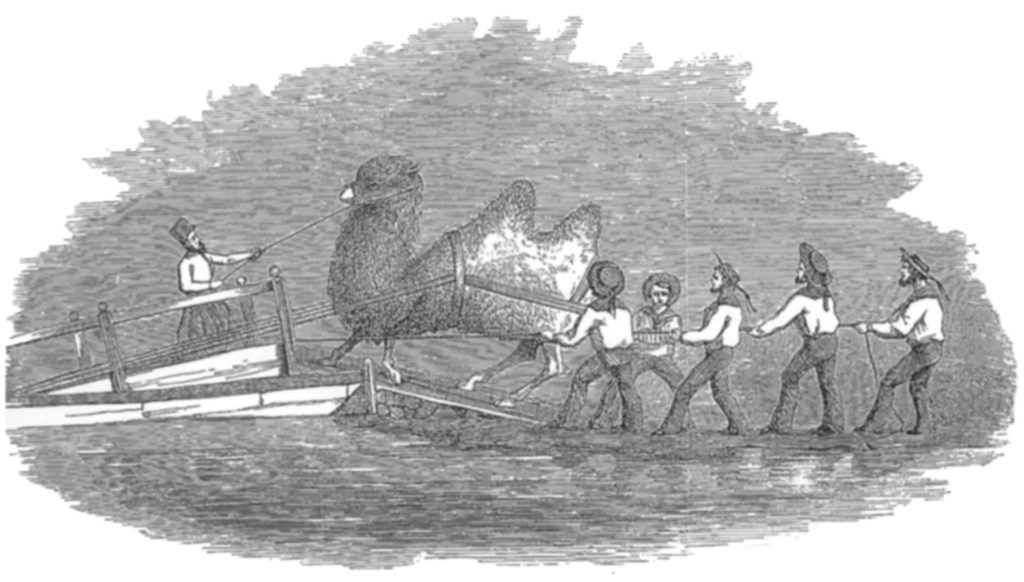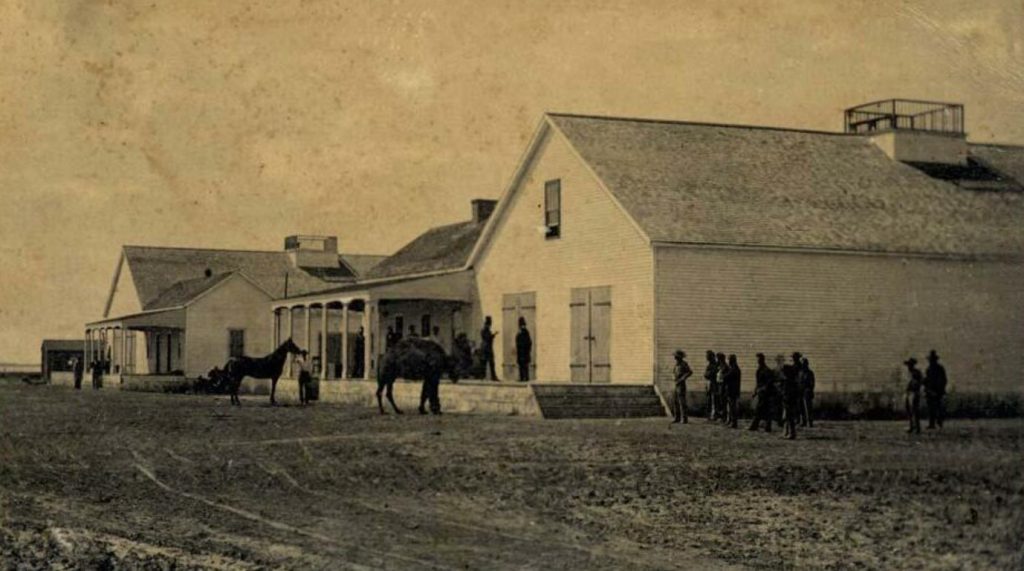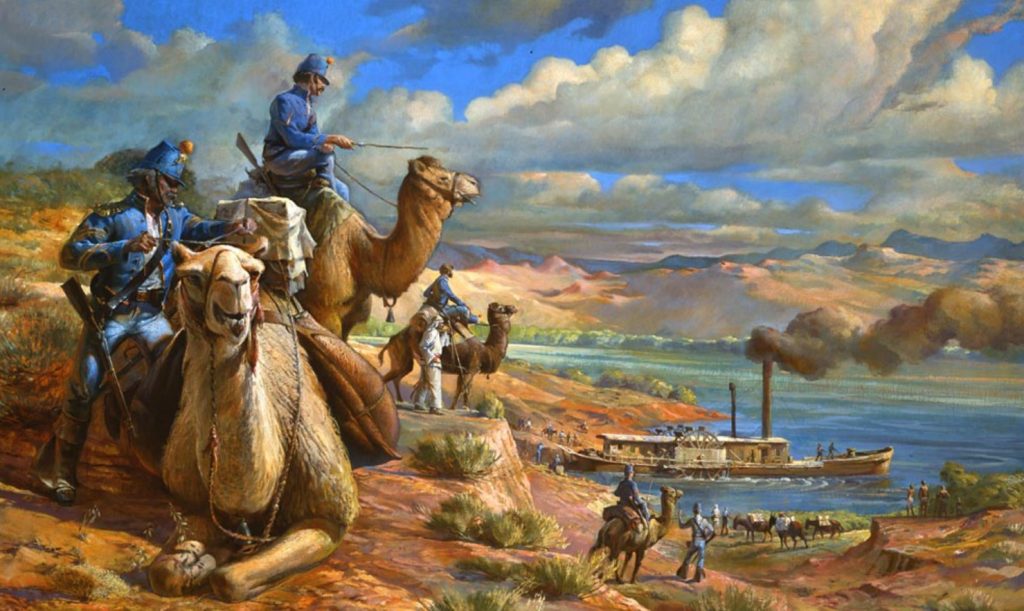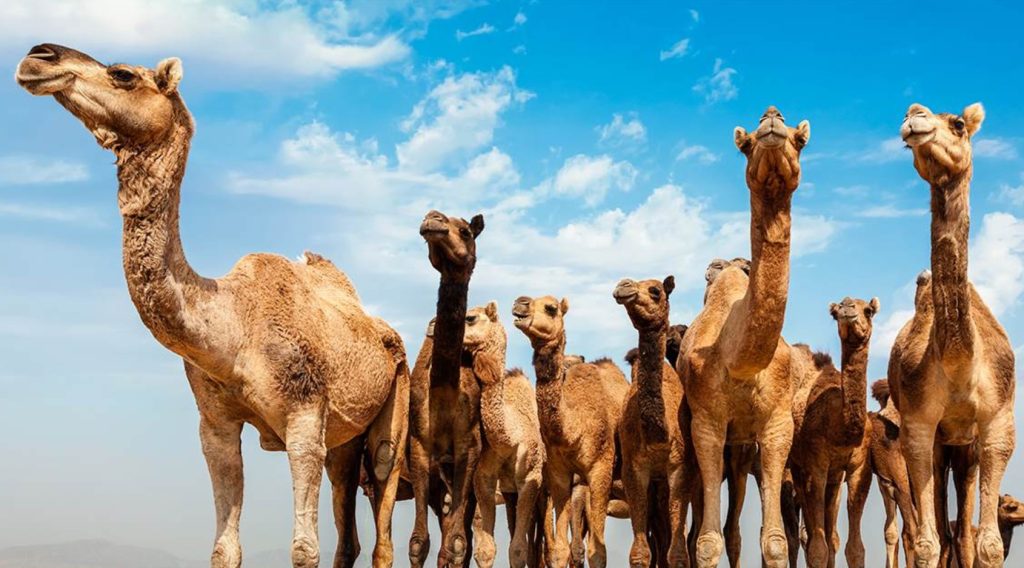In the mid-19th century, the United States faced a unique challenge in its expansion westward. The arid deserts of the Southwest posed significant obstacles for the military in terms of transportation and maintaining supply lines. Seeking a solution, the U.S. Army embarked on an ambitious experiment—the creation of a Camel Corps. Inspired by the idea of using camels as the “ships of the desert,” the Army believed these remarkable creatures could navigate the challenging terrain and revolutionize military operations in the region. Let’s delve into the fascinating story of America’s Camel Corps experiment, its challenges, and its ultimate demise.
The Genesis of the Camel Corps
The seeds of the Camel Corps experiment were sown in the aftermath of the Mexican-American War and the signing of the Treaty of Guadalupe Hidalgo in 1848. This treaty added vast desert territories to the United States, including parts of California, New Mexico, Arizona, Utah, Nevada, and Colorado. These regions presented significant challenges for the existing cavalry horse and supply mule units of the U.S. Army. The cavalry units had to navigate from one water hole to another, while transporting grain supplies and water casks significantly reduced their speed and range. On the other hand, the desert-dwelling Native Americans, who could live off the land, possessed an advantage over the army units, covering great distances without the need for supplies.

Major Henry C. Wayne, who had witnessed these challenges during the Mexican conflict, became a fervent advocate for the use of camels in the desert regions of the country. Recognizing the animals’ stamina, load-carrying capabilities, and ability to endure without water, Wayne proposed the idea of a camel corps. His vision caught the attention of Senator Jefferson Davis from Mississippi, who was intrigued by the potential military applications of camels.
The Journey Begins
In 1855, Congress appropriated $30,000 (equivalent to approximately $900,000 today) for the camel experiment. A joint Army-Navy operation was set in motion. Major Wayne led the selection and purchase of camels, while Lieutenant David Dixon Porter, a seasoned naval officer with firsthand knowledge of camel care, was tasked with safely transporting the animals to the United States.

The acquisition of camels took Wayne and Porter on an adventurous journey through England, France, Italy, Egypt, and Turkey. They carefully selected a diverse stock of camels, including both dromedaries (Arabian camels) and Bactrians (two-humped camels), to assess their adaptability to the American climate. Finally, in February 1856, Wayne and Porter set sail for America with 33 camels, including one gigantic 7-foot-4-inch, 2,000-pound Bactrian camel, which required modifying the ship to accommodate its enormous size.
The Testing Phase
While Porter embarked on a second trip to acquire more camels, Wayne initiated testing with the original 34 animals. The objectives of the tests were twofold: to evaluate the combat capabilities of the camels and to assess their potential as transportation assets. The results were promising. Camels proved superior to mules, as they could travel without water for eight to ten days, cover distances of thirty to forty miles per day, and subsist on prickly plants along the trail.

Despite their advantages, camels had their downsides. Their distinctive odor, a novelty to American noses accustomed to the scent of working horses and mules, was considered a drawback. Moreover, camels could be temperamental and occasionally spat a repugnant mass of cud at those they disliked.
The Fate of the Camel Corps
In 1857, a change in administration led to the departure of Davis and Wayne, who were key proponents of the Camel Corps. However, the program persisted. Camels were employed on surveying expeditions and even participated in combat, proving their usefulness. Unfortunately, the Civil War eventually overshadowed the camel experiment and drained the country’s resources and attention.
In the end, the camels were auctioned off, leading to various fates for these remarkable creatures. Some found themselves in circuses, providing rides to children or participating in “camel races.” Others roamed on private ranches or worked as pack animals for miners. A few were released to fend for themselves, leading to reported sightings of camels in the desert for years. The final known camel died in Griffith Park, Los Angeles, in 1934, having lived a remarkable eighty years.
Lessons Learned
The failure of the Camel Corps experiment can be attributed to several factors. First and foremost, inadequate funding hindered the ambitious project from the start. As predicted by Major Wayne, establishing camels in the country and proving their value required a more substantial investment over a more extended period than the allocated funds allowed.

Additionally, a lack of acceptance by military personnel and the public contributed to the experiment’s downfall. The novelty of using camels in military operations failed to garner widespread support. This underscores the importance of thoroughly educating and indoctrinating personnel when implementing innovative systems.
Conclusion
The Camel Corps experiment of the mid-19th century stands as a unique chapter in American military history. While the endeavor did not achieve its intended goals, it showcased the potential of camels in navigating the arid Southwest and revolutionizing transportation. The experiment serves as a reminder of the significance of adequate funding, acceptance, and public relations in implementing novel military initiatives.
Although the Camel Corps was ultimately disbanded, its legacy lives on as a testament to the adventurous spirit and innovative thinking of the era. The tale of America’s Camel Corps remains an intriguing and memorable episode in the nation’s westward expansion.
Frequently Asked Questions for the Camel Corps Experiment in America
What was the purpose of the Camel Corps experiment in America?
The purpose of the Camel Corps experiment in America was to explore the use of camels for military purposes in the arid regions of the Southwest, particularly after the United States acquired vast desert territories through the Treaty of Guadalupe Hidalgo.
How did the Treaty of Guadalupe Hidalgo contribute to the need for the Camel Corps?
The Treaty of Guadalupe Hidalgo, which marked the end of the Mexican-American War, added expansive desert territories to the United States. This expansion necessitated the exploration of new transportation methods, leading to the consideration of camels as a potential solution.
Who were the key proponents of the Camel Corps, and why were they interested in using camels for military purposes?
The key proponents of the Camel Corps were Major Henry C. Wayne and Senator Jefferson Davis. They recognized the camels’ stamina, load-carrying ability, and their well-known capacity to survive in arid environments, making them suitable for military operations in the Southwest.
How were the camels acquired and transported to the United States?
The camels were acquired from various countries around the Mediterranean, including Egypt and Tunisia. They were then transported to the United States by naval vessels, such as the USS Supply, which had specially designed accommodations for the camels.
What were the main advantages of using camels in arid regions and desert landscapes?
Camels offered several advantages in arid regions. They could endure long periods without water, travel significant distances in a day, and feed on prickly plants along the trail. These traits made them superior to traditional transportation methods like mules.
Were there any challenges or downsides to using camels in the military?
While camels had their advantages, they also had some downsides. They had a distinct odor that people not accustomed to working with them found unpleasant. Additionally, camels could display unpredictable behavior and sometimes spit a foul-smelling substance when provoked.
What were the outcomes of the tests conducted by the Camel Corps in terms of combat capabilities and transportation potential?
The tests conducted by the Camel Corps showcased the animals’ combat capabilities and transportation potential. They proved to be superior to mules in terms of endurance and load-carrying capacity, making them valuable assets in arid regions.
Why did the Camel Corps experiment ultimately come to an end?
The Camel Corps experiment came to an end due to various factors, including the change in administration and the outbreak of the Civil War. The focus shifted to other military priorities, and the use of camels in the Southwest diminished over time.
What happened to the camels after the experiment? Did they continue to play a role in American society?
After the experiment, the fate of the camels varied. Some were auctioned off and found new roles in circuses, carrying packs for miners, or even roaming freely. Sightings of camels in the desert were reported for years until the last known camel died in 1934.
What lessons can be learned from the Camel Corps experiment and its impact on American history?
The Camel Corps experiment offers important lessons about the need for public acceptance and support, as well as the importance of effective communication and coordination in implementing new and innovative programs. It also highlights the potential cost-saving benefits that the camels could have provided in developing the Southwest and managing conflicts with Native American tribes.
References:
- Hawkins, V. (1980). Camels as Military Transport in the Southwest. Arizona and the West, 22(4), 323-342.
- Crouch, B. (1993). The Strange Saga of America’s Great Camel Experiment. Smithsonian Magazine. Retrieved from https://www.smithsonianmag.com/history/the-strange-saga-of-americas-great-camel-experiment-66140411/
- Scott, D. L. (2007). Camels as Complement to Horses and Mules. In The Camel (pp. 118-139). Tauris.
- United States Camel Corps – Wikipedia
- National Park Service. (n.d.). The U.S. Camel Corps. Retrieved from https://www.nps.gov/elma/learn/historyculture/the-u-s-camel-corps.htm
